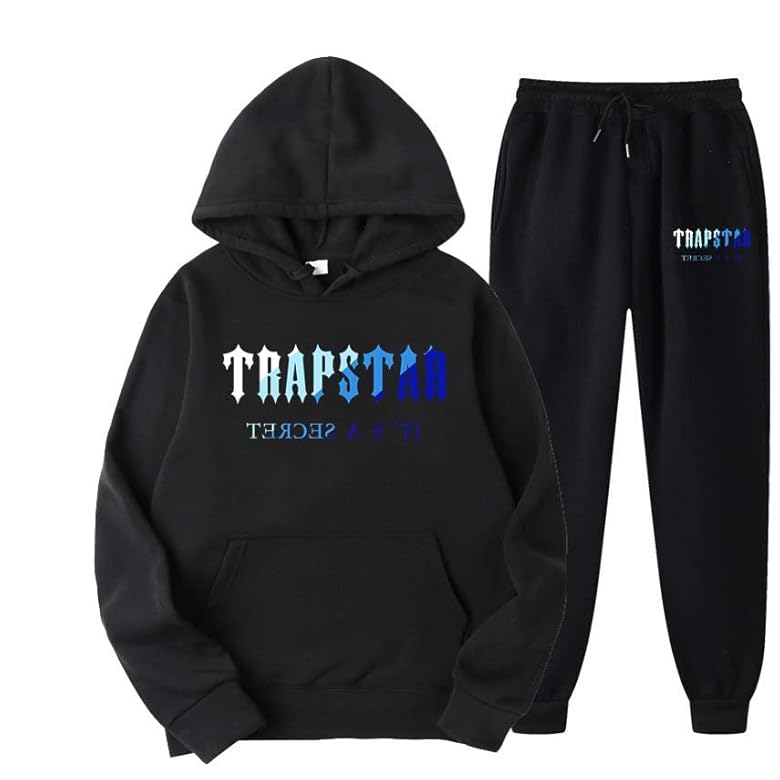It Started in Silence, Now It Speaks Volumes
Picture this: on a Friday night, streets buzzing, neon reflections on wet pavement. You pass someone with a hoodie pulled up, moving fast. You don’t notice it at first. Then the word Trapstar catches you. Not flashy, but precise. Sharp. Enough to pause your stride, even if only for a second.
That’s how Trapstar operates. It doesn’t force itself into your vision. It waits — and when your attention comes, it’s because it earned it.
How a Minimalist Name Became Loud
Trapstar grew from a sideways glance and quiet confidence, not billboards. It’s grounded in places where ambition mingles with struggle. That tension is what gives it weight. It never stakes a claim—it suggests.
In every city where it appears—from street stalls to fashion shoots—the same energy travels. The same grit. That consistency builds character and loyalty.
Not Just Clothing: A Gesture You Wear
A Trapstar Hoodie isn’t just about staying warm or looking fit. It’s about what you carry underneath: intention.
You slip it on. It sits heavy enough to feel like a shield, yet soft enough not to crack. The typography is clean. The phrase (if there is one) is short. You get the irony. You smell the sweat of its origins—studio sessions, late-night real talk, city heat. Every fiber whispers stories.
Crafted for Movement, Built for Real Life
The Trapstar Hoodie isn’t delicate. It’s made for motion, for mornings spent walking through rain and evenings spent under stage lights. It shrugs off wear and still stamps presence. It doesn’t rely on bright branding. The effect is subtle, but it lingers.
People don’t wear it because they want to be seen. They wear it because they want to belong. And if someone else recognizes it, there’s an unspoken acknowledgment.
Why Trapstar Feels Different
In a sea of logos, Trapstar doesn’t shout. It breathes. It trusts that people who see it will feel it—without help.
The brand ethos: limit the distractions, double down on authenticity. Keep the conversation raw. Keep it alive in the streets. Let the brand evolve with its community, not above it.
Trapstar always moves, never belongs. That’s its paradox—and its power.
The Power Of That Hidden Line
Every now and then, people ask: Why so little text? Why minimal colors? Why no hype machine?
But sometimes the smallest line conveys the strongest message. When you wear the Trapstar Hoodie, it feels like wearing something earned. The folds and slight creases become yours. Your experiences glide through the fabric.
That restraint sends a message louder than any flashy print ever could.
Still Underground, Even When the Spotlight Finds You
Sure—editors wear it. Musicians wear it. International labels stock it. But when Trapstar enters the mainstream, something wild happens: it doesn’t lose its soul.
Because it never sold out. It stayed loyal to its origin. Every new release still references that foundation—quiet, street-level, rebellion simmering under the surface.
And that loyalty matters. It makes the brand feel alive, still breathing.
When the Fashion Crowd Meets the Pavement
You’ve probably seen the Trapstar Hoodie in fashion shows. Maybe on a runway. But even there, it looked like it belonged. Not borrowed. That’s rare.
Fashion brands try to adopt the culture. Trapstar was already part of it before fashion noticed. That’s why when Trapstar moves, culture follows. Strawberry-lipstick models or grime videos—it all fits. Because Trapstar adapts without losing its core.
People Not Products
Actors. Athletes. Artists. But most of all, regular humans. Taxi drivers. Streetwear lovers. Weekend photographers. The ones who buy it because it feels like home, not because it’s trending.
You buy the Trapstar Hoodie not as armor, but as a signpost: a reminder that you remember where you came from. That the journey still matters.
Not Just Threads, But a Kind of Code
It’s a weird thing to say about clothing, but Trapstar feels coded. Not exclusive. Just coded. Only people who connect with the background feel at home in it. It’s not about financial reach—it’s about emotional reach.
That’s why people respect it. It earned its own dialect, and then invited you in quietly.
Why It Still Matters
Lots of clothing brands fade. They chase trends. They overproduce. They water down.
Trapstar stayed lean. Slow releases. Real community. Real roots. Real commitment.
It didn’t need to compete. It needed to remain. Consistent, curious, connected.
When the Hoodie Becomes a Habit
You wear it. It becomes part of your rotation. It fades in places—even frays sometimes—and it still feels right. That’s the hoodie’s charm: it ages, it softens, but it never loses meaning.
People don’t hang Trapstar pieces in glass cases—they live in them. They move while wearing them. The Trapstar Hoodie becomes part of your backyard, your afterparty, your travel bag. It’s not a prop. It’s a process.
Final Thought: Trapstar Is a Quiet Signal That Echoes
You might wear it one time and feel something. Or never notice it. That’s fine. This piece isn’t for everyone.
Trapstar is for the ones who don’t need applause. The ones who listen, observe, and then quietly choose. The brand that speaks without shouting.
Pull on a Trapstar Hoodie, and you carry resilience. Identity. A quiet revolution. Not because it’s trendy—but because it mattered to you, before everyone else caught on.
